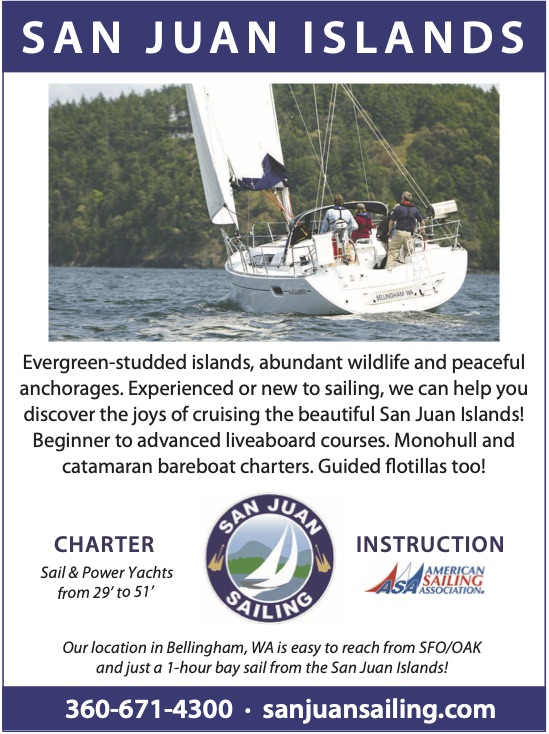
A Hero’s Welcome in the Vendée Globe
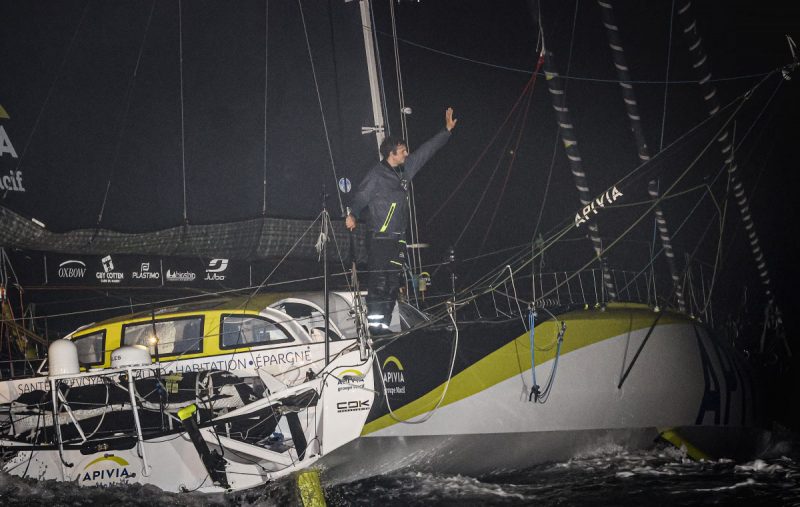
While the majority of the fleet is still ascending the Atlantic, the frontrunners in the Vendée Globe have returned to a hero’s welcome in Les Sables-d’Olonne, France. Nine boats finished within two days of the leader. The closest edition in the event’s history, this race remained almost impossibly close until the very end. In an unprecedented series of events, the third boat over the finish line has been declared the overall winner. Yannick Bestaven, skipper of Maître CoQ IV (ex-Safran), has won the Vendée Globe by 2 hours, 31 minutes over Charlie Dalin on Apivia.
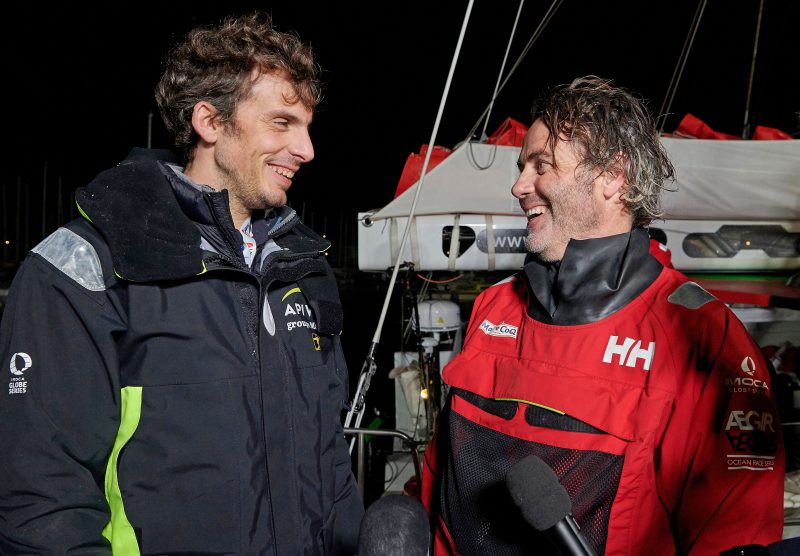
Sailing into Les Sables-d’Olonne in a high-speed downwind jibing duel among the top five boats, the eventual winner remained a mystery until the final hours and minutes of the race. Pre-race contender Charlie Dalin narrowly led Louis Burton and Bureau Vallée 2. But he still had to contend with third-place Boris Herrmann on Seaexplorer — Monaco Yacht Club, fifth-place Yannick Bestaven, and eighth-place Jean Le Cam on Yes We Cam!, all of whom had time credits applied to their finish times due to aiding in the rescue of PRB skipper Kevin Escoffier nearly two months ago. Applying basic math corrections, five or six boats still had a chance to win during the last two days of the race.
German skipper Boris Herrmann had a legitimate shot at overall victory until 90 miles from the finish when his one-generation-old IMOCA 60 collided with a fishing boat. Sustaining damage, Herrmann reduced speed and wound up fifth. Charlie Dalin on the new-generation Apivia finished first over Louis Burton and his one-generation-old Bureau Vallée 2. Yannick Bestaven came home third. Bestaven corrected out to first place overall, however, once the 10-hour, 15-minute time credit was applied. An international jury awarded him the credit due to the time he lost while searching for PRB skipper Kevin Escoffier, who was in a liferaft after his boat broke in half in the Southern Ocean.
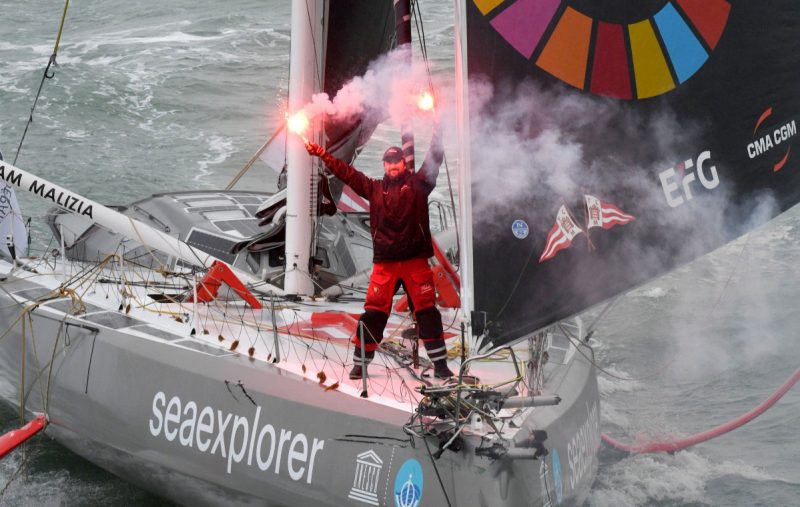
Bestaven — previously best known for inventing the Watt&Sea hydrogenerator and winning the Mini Transat and the Transat Jacques Vabre in the Class 40 division — has sailed a masterful race aboard his one-generation-old Maître CoQ IV. A professional racing sailor and engineer by trade, Bestaven flew under the radar of a majority of sailing writers before this Vendée Globe. With a boat that proved to be faster than previously thought and a skipper very adept at maintaining systems and solving problems, Bestaven proved to be a contender from the start.
Excelling in the Southern Ocean, Bestaven worked his way into third by Cape Leeuwin and first by Cape Horn. With his 10.25-hour time credit, he threatened to run away with the race until becoming nearly becalmed just south of Rio de Janeiro and watching his 440-mile lead run out with the tide. Seemingly out of the money, Bestaven managed to hang with the leaders and scrape out a close and hard-earned victory by the smallest margin in race history.
Craftsperson, Fleet Leader, Sailing Champion – the Milly Biller Sailing Story Keeps On Sailing
The name Milly Biller keeps showing up in the pages of Latitude 38 because she keeps sailing so much. The name would have shown up even more if the first time she appeared in Latitude 38 her name hadn’t been Millie Bratenahl. But that’s what it was in July 1979.
We discovered this when exploring our new digital archives and came upon the story we’d written about Milly’s becoming perhaps the very first woman hired as a craftsperson at a Bay Area boatyard. Craftsperson might be a more glamorous term than should be used for much of the hard labor she describes in the early years. It seems like ‘just the other day’ she was repairing boats and practicing her craft at the upper end of the Richmond Boat Works railway. The story reminds us of how hard it can be for women to break the plexiglass hatch cover, but also of the rewards of persistence.
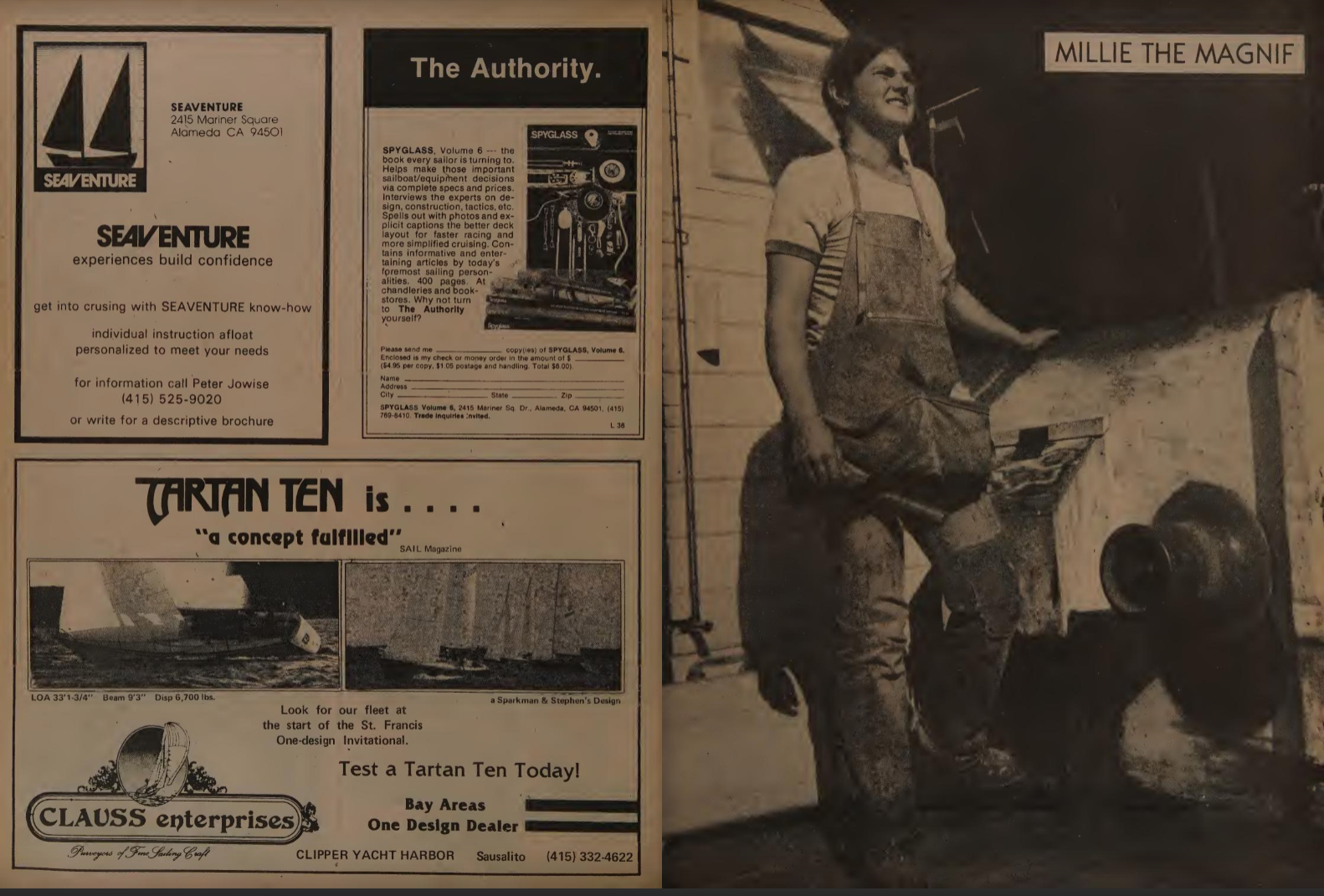
We sent the story off to Milly, who replied, “HAHA! Those were the daze. I think you were selling Latitude ads to the boatyard about that time and when I first met you (I was! – ED). I may have spelled my name with an ‘ie’ in those days. I loved that story then and love it still. I have a hard copy of it around here somewhere. I stole my dad’s 110 when I was 13. I picked a time when he was totally distracted writing a paper and shoved a change of ownership letter under his nose that I had typed myself. He signed it blindly like it was a school permission slip. He loved it, promptly bought another 110, conscripted me to maintain it, and beat me in every race until I went off to college.”
Milly continues to be at the hub of the Inverness Yacht Club volunteer crew and is the 110 fleet ringleader, sailing her boat Big Pink. Joe Berkeley, who traveled to Inverness from the Hull, MA, 110 Fleet, stated in our September 2019 story on the 110 Nationals, “Milly Biller has made Inverness the 110 Mecca of the world. Without her, there would be no class, no Nationals. What she has done with the Inverness fleet is nothing shy of spectacular. We have considered kidnapping her and holding her hostage on the East Coast until she has worked her magic on our fleet.” This year Milly’s become a Summer Sailstice 110 fleet ambassador to help get 110s all sailing together, wherever they are, on June 19.
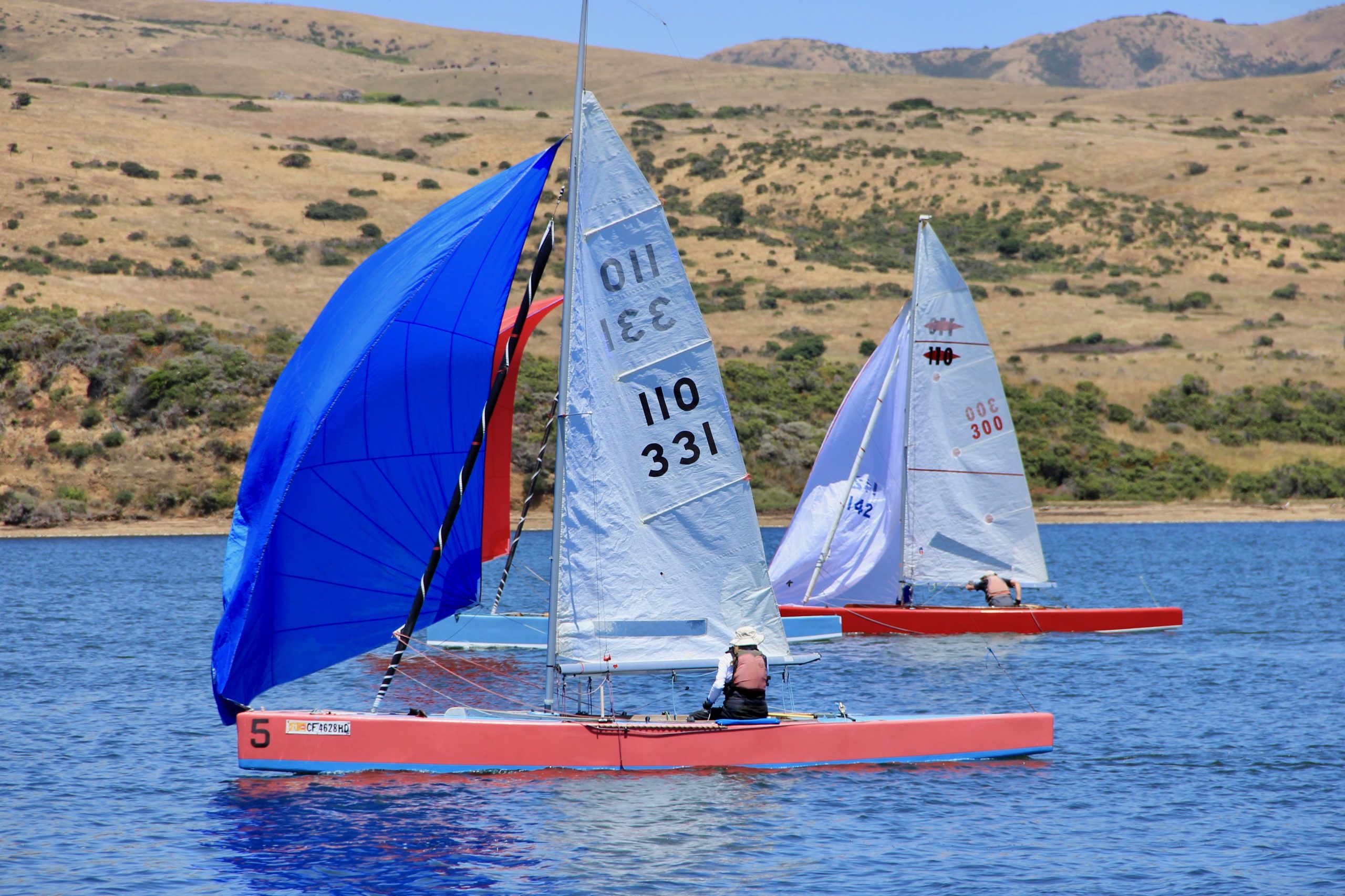
Midday low tides in Tomales Bay and pandemics may be hurdles to leap, but Milly has always found a way to break barriers, have fun, and encourage the world to go sailing.
Charter with San Juan Sailing
OCC’s 2020 Jester Award Goes to Jack van Ommen
Jack van Ommen has been named as the Ocean Cruising Club’s 2020 Jester Award recipient. Judged by a panel of experienced ocean sailors, the award acknowledges Jack’s years-long journey to circumnavigate the globe before his 80th birthday.
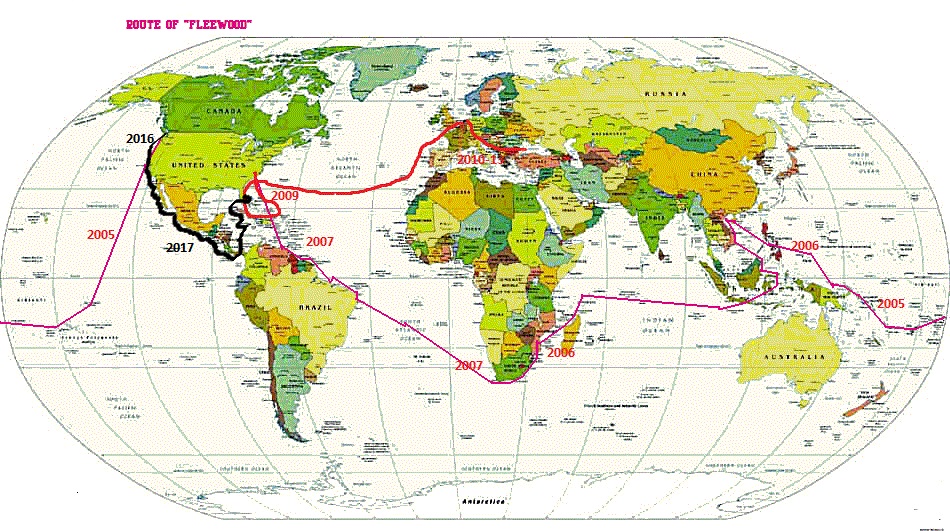
The judges were “extremely impressed” by the sailor’s 12-year solo adventure — his nomination stated, “Jack van Ommen is a true single-handed small boat (30’) adventurer and I consider his circumnavigation and also his present-day cruises certainly as noteworthy. Moreover, they are also an inspiration for aspiring yachtsmen of all ages to undertake long-distance sailing in small boats. By writing extensively and in a candid way about his cruises he offers a wealth of experience, enthusing readers to visit and connect with distant places under sail.”
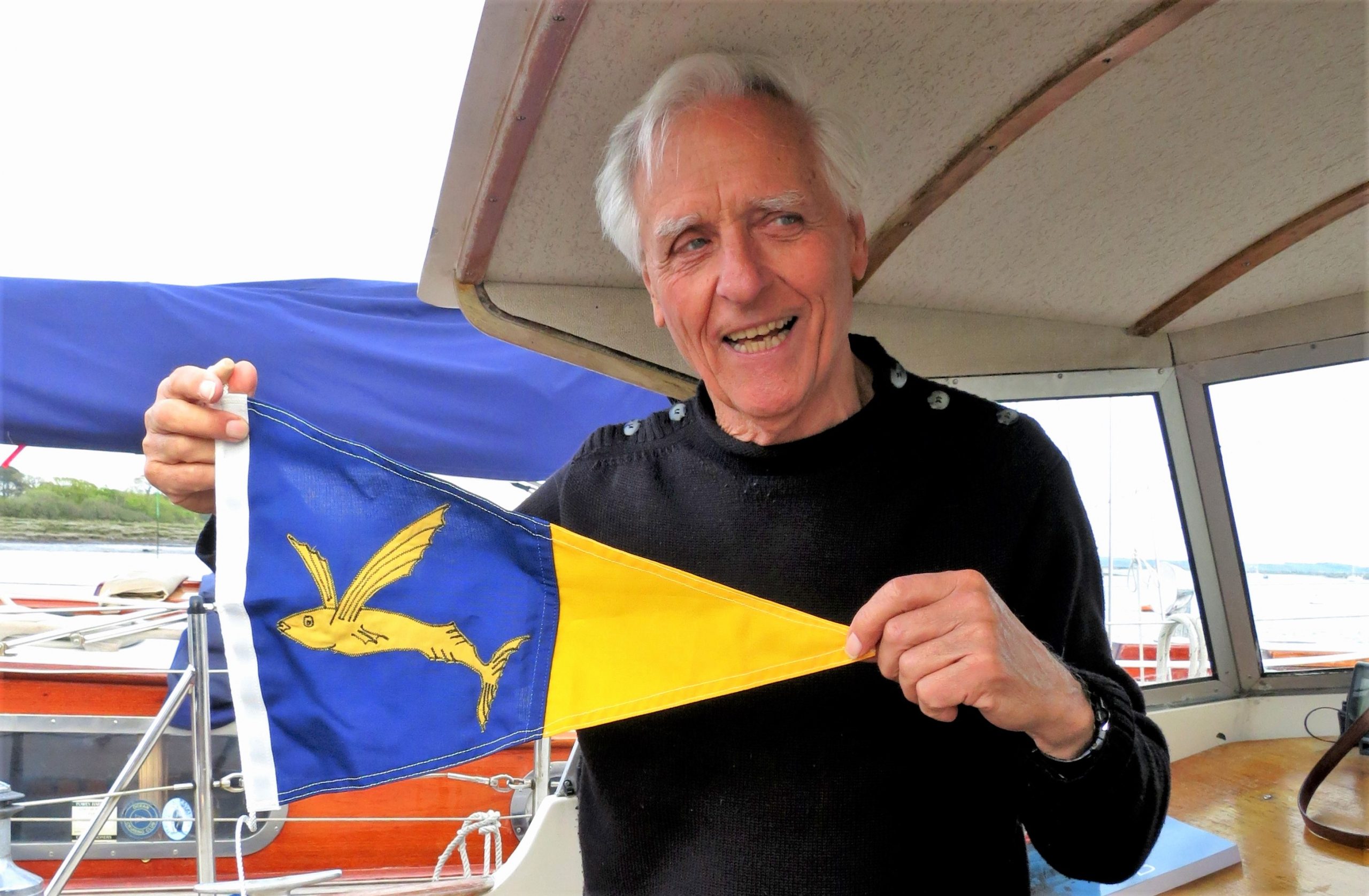
Those of you familiar with Jack’s blog cometosea.us will know that he has endured two shipwrecks, the first of which left him boatless on the island of Tagomago, near Ibiza. His replacement vessel was a 30-ft Naja, a duplicate of his first, and which ultimately bore the same name, Fleetwood. Fortunately the second shipwreck was not as complete as the first. Fleetwood was rebuildable, and two years after running aground on Mink Island, VA, Jack was able to continue his voyage.
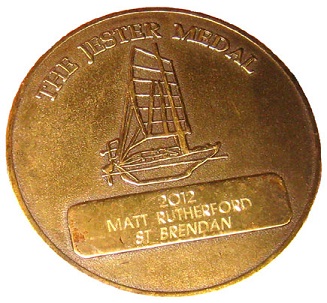
The Jester Award, named after Blondie Hasler’s Folkboat Jester, recognizes a noteworthy singlehanded voyage or series of voyages made in a small vessel.
Ocean Cruising Club members can be found across all oceans: “Members understand what it means to be at sea, to be completely reliant on our own skills, to be subject to the whims of Mother Nature, to be humbled and empowered at one and the same time. This is what sets us apart from other organizations, even as it draws us together as a group.”
- COVID-19 Sailing
- West Coast Sailing
- Commentary
- Northern California Racing
- Racing
- Current News
- Events
Yacht Racing Association Issues New Guidelines for 2021
One of the big challenges for race committees and racers in 2020 was understanding the ever-changing, county-by-county guidelines regarding what’s deemed safe and what is allowed in the Bay Area. Benicia Yacht Club in Solano County, Berkeley YC in Alameda County and Sequoia YC in San Mateo County each had to interpret their local guidelines and then develop Sailing Instructions to comply. Thanks to Laura Muñoz and the Yacht Racing Association of San Francisco Bay, that’s now become somewhat easier.
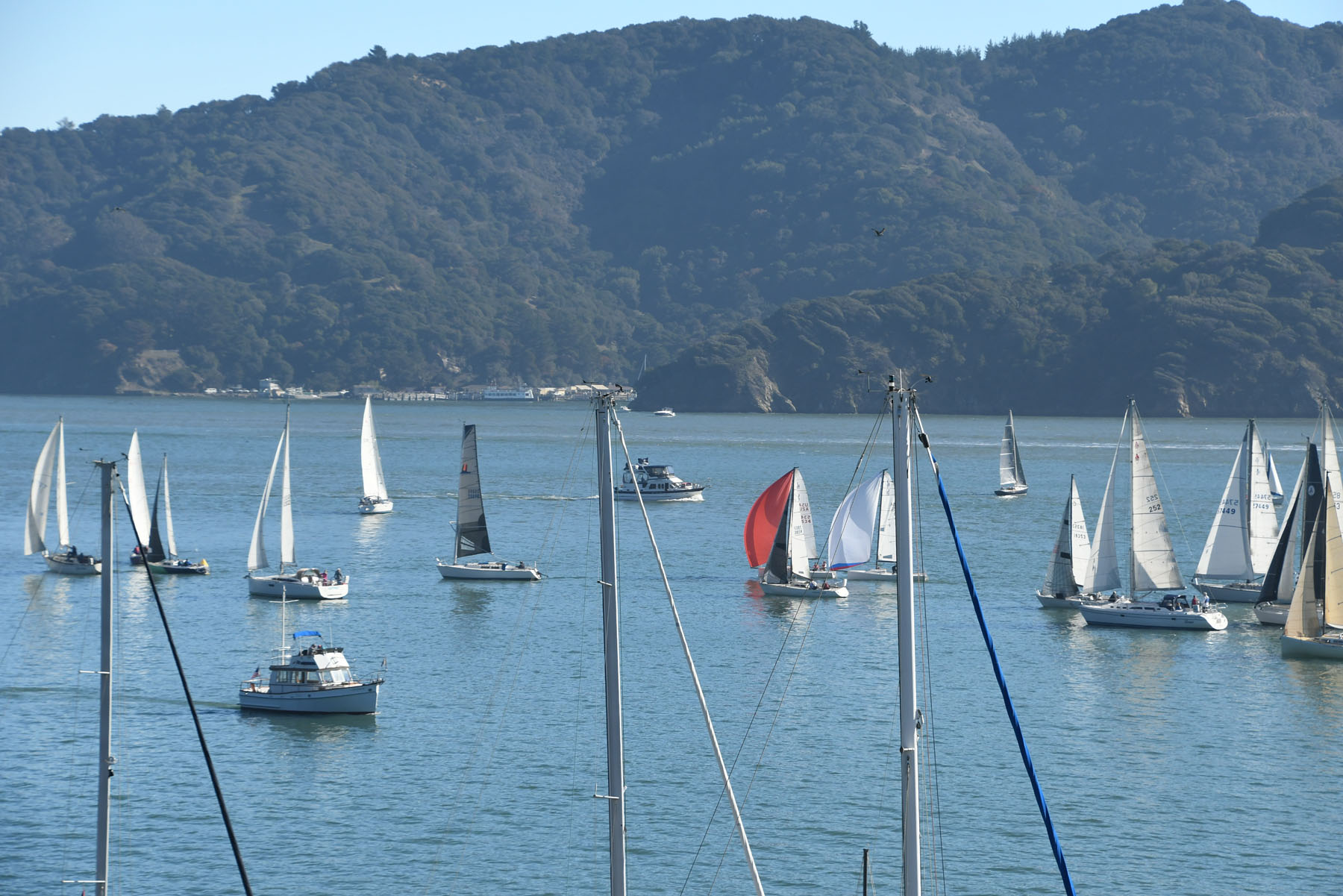
The new system allows organizers to look at their county’s COVID tier and follow the guidelines developed for that color. (Almost all of the state is currently in the Purple Tier.) The YRA finalized the guidelines and distributed them to race coordinators earlier this week. These are the guidelines the YRA will be following this year, and they are encouraging all the clubs to follow them as well. The YRA’s office is located in Solano County; therefore, they will use Solano County’s tier for their own regattas.
Statewide Stay-at-Home Order in Place
Racing is not recommended. If an event is held, it should be singlehanded only, or crews from the same household only.
Purple ‘Widespread’ Tier
Single or doublehanded racing is OK.
Doublehanded crews do not need to be from the same household.
Masks must be worn.
No in-person pre- or post-race activities.
Red ‘Substantial’ Tier
Crewed racing is OK provided the crew is from the same social bubble.
Masks must be worn.
No in-person pre- or post-race activities.
Orange ‘Moderate’ Tier
Crewed racing OK provided crew is from the same social bubble.
Masks must be worn.
Outdoor bar service or takeout is OK post-race, provided the county orders allow such service.
Yellow ‘Minimal’ Tier
Crewed racing is OK.
Masks are recommended.
Indoor and outdoor bar service is OK, at a reduced capacity, provided the county orders allow service.
The YRA has posted these guidelines on the YRA website on a new COVID-19 page so that racers will know what to expect this year. The YRA plans to hold the full season of racing. The events will just be modified to meet the above guidelines. Races in the Purple Tier won’t count for a series, except for the YRA’s new doublehanded series, which will be doublehanded-only regardless of which tier we’re in. (We’ll have more on that series and a preview of February’s races in next week’s ‘Lectronic Latitude.)
The only thing we see missing is the Green Tier, which would allow us all to party like it’s 2019! Patience is still required.
The bottom line remains the same. Nobody wants the pandemic to get worse, or their crew, competitors or fellow club members to get sick. County guidelines are guidelines and not guarantees. Everyone will have to use their best judgment to make sure that we all stay healthy and racing can continue.

